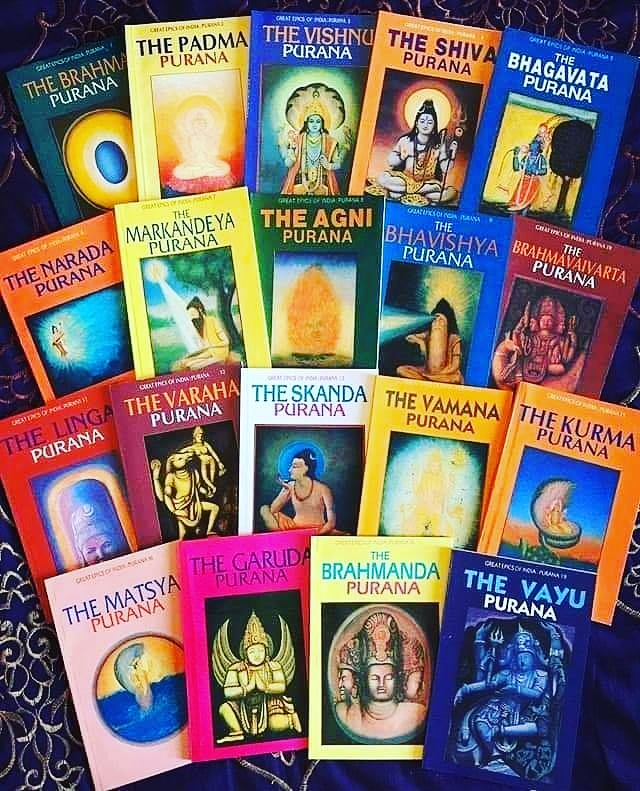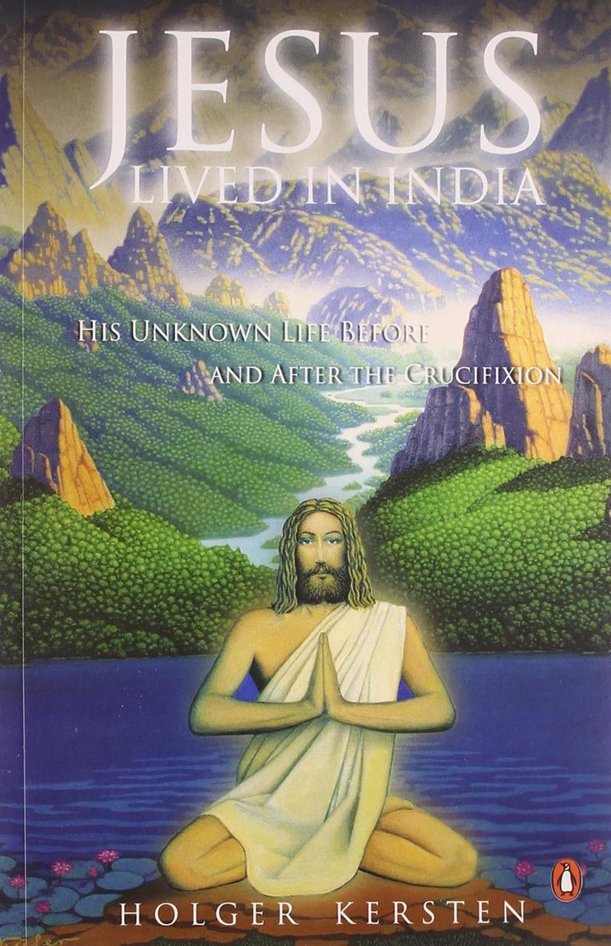Introduction: ‘Śaunaka’ group of sages carried out a ‘yāga’ for global welfare. ‘Sūta’ alias ‘Romaharśaṇa’ a wandering monk, expert in telling spiritually symbolic stories in romantic hair-raising style and famous as ‘Purāṇika’, frequently visited them. Some families in Maharashtra and north Karnataka area have ‘Purāṇika’ as their surnames, most probably because their ancestors used to present ‘Kīrtana’s’ embedded with stories from Paūrāṇika literature.
Śaunakaadika (representative of ‘Śaunaka’ group of sages): Welcome Sūta Mahāṛṣi. Your guru Vyāsa Mahāṛṣi made unbelievably huge and excellent contributions to Vedopaṇiśadic philosophy and literature within a single human life spam. He is therefore respected as divine incarnation of Lord Viṣṇu. Later, why did Vyāsa created Paūrāṇic literature?
Sūta: Vyāsa Mahāṛṣi first condensed the huge ‘Vedic’ literature (1000,000,000 stanzas, Śata koti pravistāram) to just about 10,000 most important stanzas. Then, he divided them in four major topic-based groups (Ṛgveda, Yajurveda, Sāmaveda and Atharvaveda). He passed on the responsibility of study and maintenance of these four Vedic literatures, to four of his sharp, intelligent, best students. Then, he thoughtfully made the Vedic-knowledge, available in memory friendly, interesting, mind bogglingly attractive Paūrāṇic symbolic story formats. This way, it has become easily digestible and interesting to children, youngsters and common man possessing average, below average levels of intellectual capability.
He selected 18 major and 18 semi-major topics and composed 18 Purāṇa and 18 Upa-Purāṇa texts. He designed and authored this literature full of symbolic stories. Each one of this ‘Purāṇa’ & ‘Upa-Purāṇa’ texts, includes information about all important theoretical Vedopaṇiśadic concepts and knowledge. These texts are recognized as 18 Mahā Purāṇas and 18 Upa-Purāṇas. For millenniums during pre-Macaulay British-rule periods in India (3000 BC to 1850 AD), these texts were taught to children, during their initial primary and secondary school type education. Study of Veda and Upaniśad texts was reserved for extraordinary children (like Ādi-Śankara) and brightest youngsters qualifying for highest level of education.
The word ‘Purāṇa’ means old, ancient. It is also often used to mean lengthy or prolonged. This literature by sage Vyāsa is compatible to get spread via mouth-to-mouth story telling mode, from grandparents to grandchildren. In the evenings, Indian village temple halls and outskirts were used, to conduct orally communicated mass education via
a) moral, spiritual stories ‘kathā-kathāna’ (‘kirtana-bhakti’) by speakers and ‘listening’ (‘śravaṇa-bhakti’) by the audiences and
b) singing divine praises, mantra phrases and devotional prayers (‘bhajana’) programs, based on stories from this Paūrāṇic literature of sage Vyāsa along with songs, abhanga’s, doha’s authored by later poets and saints like Mīrābaī, Narasi Mehatā, Purandaradāsa, Dnyāneśvara, Nāmadeva, Tukārāma etc.
Names of 18 Mahā Purāṇa texts designed and composed by Vyāsa Mahāṛṣi are:
1) Brahma Purāṇa 2) Padma Purāṇa 3) Viṣṇu Purāṇa 4) Shiva Purāṇa 5) Bhāgavata Purāṇa 6) Nārad Purāṇa 7) Mārkaṇḍeya Purāṇa 8) Agni Purāṇa 9) Bhaviśya Purāṇa 10) Brahmavaivarta Purāṇa 11) Linga Purāṇa 12) Varāha Purāṇa 13) Skanda Purāṇa 14) Vāmana Purāṇa 15) Kurma Purāṇa 16) Matsya Purāṇa 17) Garuḍa Purāṇa and 18) Brahmāṇḍa Purāṇa
Some minimum stories related with vital information about the three Supreme Gods 1) Lord Brahmadeva, 2) Lord Viṣṇu, 3) Lord Shiva and their consorts 1) Sarasvati, 2) Laxmi and 3) Umā alias Pārvatī are included in every one of all 18 Mahā Purāṇas and 18 Upa-Purāṇas texts. Briefest information about all eighteen Purāṇa texts:
1) Brahma Purāṇa (10000 verses): Everything present in any form at present, must always be present in some form or other, during the infinite time-space of the past and the future. In other words, it is immortal in it’s true nature, but gets transformed in different forms with passage of time. This ancient Indian Vedopaṇiśadic principle is restated in the modern Scientific language as a law of ‘Thermodynamics’. Viz. ‘Energy can neither be created nor be destroyed’. This indestructible ‘essence’ inside everything, is called ‘Brahmatatva’. Lord Sūrya is the nearest glaring example of divine ‘Brahma’ Energy. Brahma Purāṇa describes history of all Universes and includes praises of Lord Sūrya as typical example of divine Brahma and describes his wonderful temple at Konark, Odisha.
2) Padma Purāṇa (55000 verses): ‘Padma’ means lotus flower. Lord Brahmadeva symbolising the ‘Creativity’ of Mother Nature, is hypothesised to have got born in a symbolic ‘Lotus’ flower oozing out of the navel of Lord Viṣṇu. This Purāṇa describes birth rebirth cycles of Universes and is a good guide for pilgrimages in Indian subcontinent. Important features of Padma Purāṇa are, it includes ‘Bhagavadgītā Māhātmya’ with a symbolic story related with teachings of each chapter and a beautiful commentary on each chapter of ‘Bhagavadgītā’.
3) Viṣṇu Purāṇa (23000 verses): Meaning of the word ‘Viṣṇu’ is ‘pervading and occupying the entire pervaded space’. Lord Viṣṇu is mythologically regarded as the divine power responsible for ‘sthiti’ meaning current state or status of the Universe. Chāturvarṇāśrama-dharma is advocated as important tradition for proper maintenance of human society and its genetic racial diversity structure forever.
4) Shiva Purāṇa (24000 verses): ‘Shiva’ means pure, auspicious, divine. Lord Shiva represents natural divine purity and auspiciousness within everything. Lord Shiva also represents ‘tamo guṇa’ meaning maximum, peaking, maximisation, extreme etc. Shiva Purāṇa contains information about a) incarnations of Lord Shiva and b) important ‘vratas (e.g. Ekādaśī, Pradośa, Shivarātri, Somavāra) and c) varieties of worships for pleasing Lord Shiva and reaching his abode ‘Kailāśa’.
5) Bhāgavata Purāṇa (18000 verses): Repetitive natures of birth, expansion, spread and death after a certain lifespan of Universes are described, with focus on roles played by Lord Viṣṇu as a divine guardian and his 24 incarnations. Highlight is focused on Lord Kṛṣṇa’s incarnation.
6) Nārad Purāṇa (25000 verses): Sage Nārada, devotee of Lord Viṣṇu constantly reciting ‘Nārāyaṇa’ recommends numerous forms of ‘devotion’. Singing praises of God’s divineness (‘Kīrtanam’) is recommended as the best way of pleasing Gods. Includes information on ancient Indian Mathematics, astronomy and astrology.
7) Mārkaṇḍeya Purāṇa (9000 verses): Important feature is it includes ‘Devī Māhātmya’, Durgā Saptaśati, a ‘Śākta’ treatise on Goddess ‘Śakti’, ‘Chaṇḍī’ or ‘Durgā’.
8) Agni Purāṇa (15400 verses): Lord ‘Agni’ represents ‘Thermal Energy’ which exponentially accelerates all natural activities. This text includes ‘Encyclopaedic’ information on spiritual progress via Śaivism, Vaiśṇavism, cosmology, etc. and materialistic progress via ancient Indian geology, mining, gemology, engineering, vāstuśāstra, architecture etc.
9) Bhaviśya Purāṇa (14500 verses): Forecasts possible events in future using the trends in the past history. Advocates good moral and spiritual activities today, to ensure possibilities of good prospects for ‘Future’.
10) Brahmavaivarta Purāṇa (18000 verses): ‘Brahma-vaivarta’ means metamorphosis of ‘Brahma’. This text projects Lord Kṛṣṇa and goddess Rādhā as Mūla-Prakṛuti and Puruṣa pair.

11) Linga Purāṇa (11000 verses): ‘Linga’ means important ‘sign’ of identification. ‘Shiva linga’ (representing ‘Universe’ in cylindrical coordinates), is used as a ‘sign’ to worship Shiva.
12) Varāha Purāṇa (24000 verses): ‘Varāha’ means wild boar, and an incarnation of Lord Viṣṇu to kill demon ‘Hiraṇyākśa and save ‘Earth’ from his clutches. Astronomically, this story represents an event which is hypothecated to have occurred at the time of beginning of ‘Śveta-Varāha-Kalpa’ period. This Purāṇa text includes ‘Dharmaśāstra’ or ‘rules and regulations’ for good moral conduct and behavioural pattern to ensure healthy, happy life.
13) Skanda Purāṇa (81000 verses): Skanda represents a six faced God and son of Lord Shiva. This Purāṇa advocates pilgrimage ‘Tīrtha-yātrā’ to please all Gods and to raise one’s spiritual status. Describes geography of pilgrimage centres in Indian subcontinent.
14) Vāmana Purāṇa (10000 verses): Describes the Vāmana incarnation of Lord Viṣṇu and advocates pilgrimages for spiritual upliftment.
15) Kurma Purāṇa (17000 verses): ‘Kurma’ means a tortoise, an incarnation of Lord Viṣṇu during churning of ‘Kṣīra Sāgara’ (ocean of milk ‘milkyway’). Includes related stories.
16) Matsya Purāṇa (14000 verses): ‘Matsya’ means a fish, an incarnation of Lord Viṣṇu, during ‘Jala-Pralaya’ deluge, to save king ‘Manu’ and samples of a lot of important living species. This text Includes a) Vāstuśāstra focussing on building temples, sculptures and b) guidelines for charity, yoga and morally creditable behaviour patterns. etc.
17) Garuḍa Purāṇa (19000 verses): ‘Garuḍa’ means eagle, the carrier ‘Vāhana’ of Lord Viṣṇu. Includes civil engineering concepts and recommendations on duties of King, common man etc.
18) Brahmāṇḍa Purāṇa (12000 verses): Brahmāṇḍa means ‘Universe’, which is estimated to look like a huge ‘egg’ in shape. This text includes popular ‘Lalitā-Sahasranāma’ and ‘Adhyātma Rāmāyaṇa’.
Dr. Dhananjay B. Ghare, Former Scientist, Indian Institute of Science, Bengaluru
































